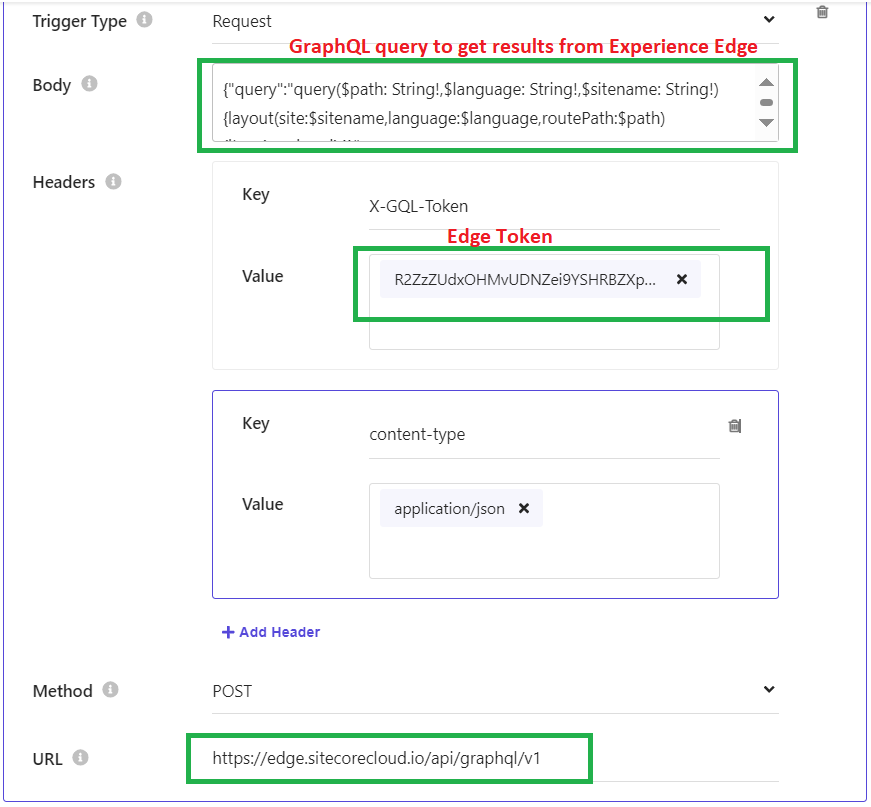Access content from Sitecore XMCloud with Asp.net Rendering Host
If we need to use the Asp.net RenderingHost instead of Next.js or React.js and to access the content from XMCloud.
There are 2 ways to access the content from XM cloud.
- Using Edge GraphQL(published content)
- Without Edge (from master database layoutservice)
Steps for creating asp.net solution for xmcloud
- Create an asp.net renderinghost project manually and update all
necessary configuration or use the following command to get the getting
started template for creating the project
- dotnet new -i Sitecore.DevEx.Templates --nuget-source
https://sitecore.myget.org/F/sc-packages/api/v3/index.json
- Then Run following command to create the project
- dotnet new sitecore.aspnet.gettingstarted -n MyXmCloud
Note:
The above command will create project with following structure, from
here use the RenderingHost project to access the XM cloud content and design
the pages accordingly.
Steps for accessing the content from XM cloud using without Edge GraphQL
- Open Appesttings.config file and configure the following settings.
"LayoutService":
{
"Handler": {
"Name": "jss-endpoint",
"Uri":
"https://xmcloudsitecoredomainname/sitecore/api/layout/render/jss",
"RequestDefaults": {
"sc_apikey": "{8C9133A0-8640-43E5-8EFB-864ACD1A7F4C}",
// api key
"sc_site": "myfirstsite" //name of the
site from which content to be retrieved
}
}
},
"RenderingEngine": {
"ExperienceEditor": {
"Endpoint": "/jss-render"
}
},
"JSS_EDITING_SECRET": "xxxxxxxxxxxxxxxx", //This setting
used for experience editor and should match sitecore setting JavaScriptServices.ViewEngine.Http.JssEditingSecret
"Analytics": {
"SitecoreInstanceUri": "https://xmcloudsitecoredomainname/"
}
- Create component name RichText by creating model
in the project with the same name of the rendering created in sitecore
XMCloud.
using
Sitecore.LayoutService.Client.Response.Model.Fields;
namespace
MyProject.Models
{
public class RichText
{
public RichTextField Text { get; set; }
}
}
- Create the necessary view(RichText.cshtml) file to bind the
model content coming from layoutservice
@model RichText
@{
<div
class="col-sm">
<div class="contentDescription">
MyRichtext: <sc-text asp-for="Text" />
</div>
</div>
}
- Map this new model and view as component in startup.cs as below
services.AddSitecoreRenderingEngine(options =>
{
options
.AddModelBoundView<ContentBlock>("ContentBlock")
.AddModelBoundView<RichText>("Richtext") //new component added
.AddDefaultPartialView("_ComponentNotFound");
})
Steps for accessing the content from XM cloud using Edge
- Access the content using Preview edge endpoint /sitecore/api/graph/edge
- Access the content using live
edge endpoint /api/graphql/v1
- open appsettings.development.json and update the following settings



Comments
Post a Comment